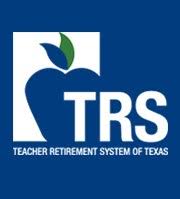 While fixed and variable annuities make up over three-quarters of the products in public school employee 403(b) plans nationwide, both are inappropriate products sold by insurance companies. Their dominance is a perfectly legal crime hidden in plain sight that costs retirees $10 billion per year in costs, according to independent analysis by Aon Hewitt in 2016.
While fixed and variable annuities make up over three-quarters of the products in public school employee 403(b) plans nationwide, both are inappropriate products sold by insurance companies. Their dominance is a perfectly legal crime hidden in plain sight that costs retirees $10 billion per year in costs, according to independent analysis by Aon Hewitt in 2016.
So what’s the big deal there?
The big deal takes a bit of explaining, but would be clear to any independent financial advisor. By “independent” I specifically mean “not paid by an insurance company.” I want to talk about first why the products are bad for school employees, and second, how it’s difficult to change the status quo in Texas. This is a game badly rigged by the insurance industry, at the expense of public school employees.
Public school district employees in Texas contribute over time to the Teachers Retirement System, (TRS) qualifying for 2.3% of their salary for every year served. Work for a school system for 20 years for example, and you’ll qualify for 46% of your employment income guaranteed, for life. (Because 2.3 times 20 is 46). That’s a fine deal for employees and very safe and lovely. It also means that long-term school district employees have a substantial fixed income guaranteed for life in retirement.
Prudent portfolio theory of diversification would tell you that you don’t need more fixed income annuities anchoring – and by anchoring I really mean more like sinking – the process of building up your retirement account. Fixed annuities are bad in this scenario because they offer a very low return that school employees don’t really deserve. That’s not what the insurance salesman is telling them, but it’s what an independent advisor would tell them.

Variable annuities are actually worse, because they charge extraordinary fees every year – TRS allows them to charge between 1.9 and 2.7 percent per year, more on that later – and further fees if you ever want to get out. Variable annuities are one of the Four Horsemen Of Your Personal Financial Apocalypse.1
School district employees: If you already set up your 403(b) account with that nice insurance salesman after the free pizza meeting in the teacher’s lounge, I know you ended up with a variable annuity product in your 403(b) account, because that’s what they’re paid to sell you.
It’s hard to fully describe just how broad the consensus is among non-insurance folks about the inappropriateness of variable annuities due to their high costs. They are the kind of product one sells, but never buys. Meaning, the people who like them are the salespeople. Everybody else – except, sadly, school district employees – knows they are terrible.
Now I’m talking directly to school district employees: Why should you believe me rather than that nice insurance salesman who bought you free pizza and put you into an annuity product rather than a brokerage product? Because I’m not being paid either way. But he is.
He is especially paid if you buy an annuity product, and specifically a variable annuity product. He’s likely paid a 5 percent commission on your upfront investment, and between 1 and 2 percent of your contributions thereafter. Now that’s what I call a great long-term annuity! For. The. Salesman.
When a stupid finance problem persists, like the status quo of public school 403(b) plans in TX, despite the fact that it’s obviously stupid to any non-conflicted observer, it’s worth asking: Why? Who benefits?

The answer to that why question often lies in some regulatory and legislative garbage fire of complexity. Within that complexity, incumbents with lobbying power at the legislative choke-point can squash solutions as they occasionally arise.
Speaking of which, let’s talk about the last time TRS attempted reforms to 403(b) plans, in 2017.
TRS staff periodically reviews rules and fees and makes recommendations to the board to revisit fees in 403(b) plans, which had been in place since 2002.
For context: One of the great developments of the past 15 years in investment management has been the astonishing drop in fees for brokerage products, with competition from low-cost providers such as Vanguard, Fidelity, and Charles Schwab.
Since 2002, investment providers to 403(b) in Texas had their fees capped at 2.75% per year by TRS. Also for context: That is crazy high cost in this day and age.
These days, 1 percent is an arguably reasonable fee for a retirement product, although competition has driven many fees in many fine products down to a fraction of that 1% benchmark.2
But 403(b) providers in Texas have been allowed to charge between three and twenty times more money for products in a 403(b) than investors could get elsewhere, outside of their 403(b) plan.

What do these fees mean in practice? They are selling Hyundais to school teachers at Lexus and Lamborghini prices. Trust me when I say the products do not perform like a Lambo.3
So anyway, how did that reform go in 2017? Thanks for asking. TRS adopted rules adopting a sliding scale of fee caps, between 1.9 and 2.7 percent for annuity products, and between 1.65 and 2.45 percent for non-annuity products. This is the kind of “reform” only an insurance company could love. This is like when I ask my daughter to clean up her catastrophe of a room, and I return 2 hours later to find she has put clothes on her American Girl doll and brushed its hair, and then she declares the entire place fixed up. This is not reform!
 Another rule adopted in 2017 included the continuation of hefty “Surrender and Withdrawal Charges” for twelve years after you buy a variable annuity. Oh, did I not mention that? If you want your money in a different product after you took the advice of that pizza-slinging salesman, you have to leave between 1 and 10 percent of your investment behind.
Another rule adopted in 2017 included the continuation of hefty “Surrender and Withdrawal Charges” for twelve years after you buy a variable annuity. Oh, did I not mention that? If you want your money in a different product after you took the advice of that pizza-slinging salesman, you have to leave between 1 and 10 percent of your investment behind.
I don’t think they literally make teachers put both hands in the air to act out the physical sign for “Surrender” as they turn over 1 to 10 percent of their retirement investment to the insurance company. But they might as well have. The perfectly legal crime is the same either way.

Hey, insurance company lobby? You won. The 600,000+ public school employees surrendered. Nice job everybody.
A version of this post ran in the San Antonio Express News and Houston Chronicle.
Please see related posts
TRS’ Problem of Choice with TX 403(b) Plans
Teachers Can’t Get Good Advice For Retirement
Nobody Advocates at the State Level for Teachers’ 403(b) Plans
Post read (292) times.





